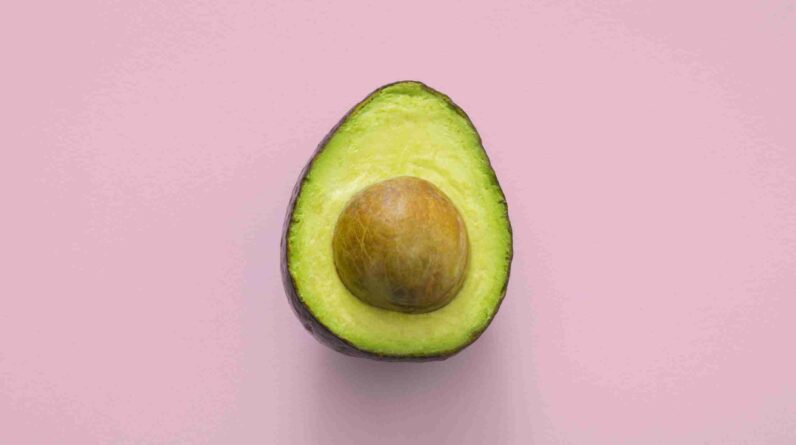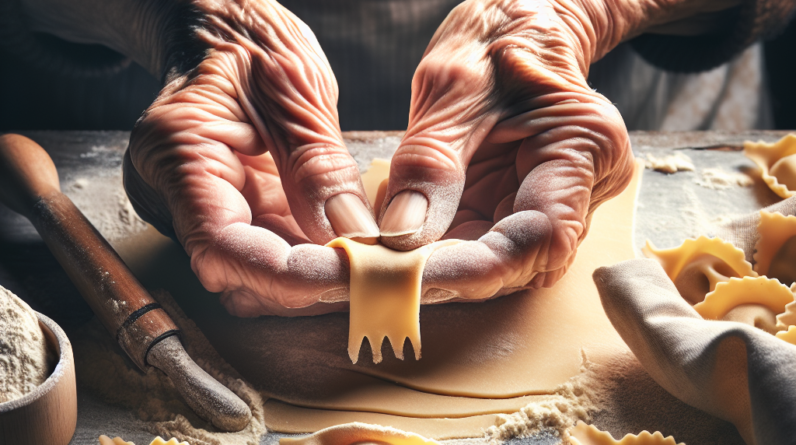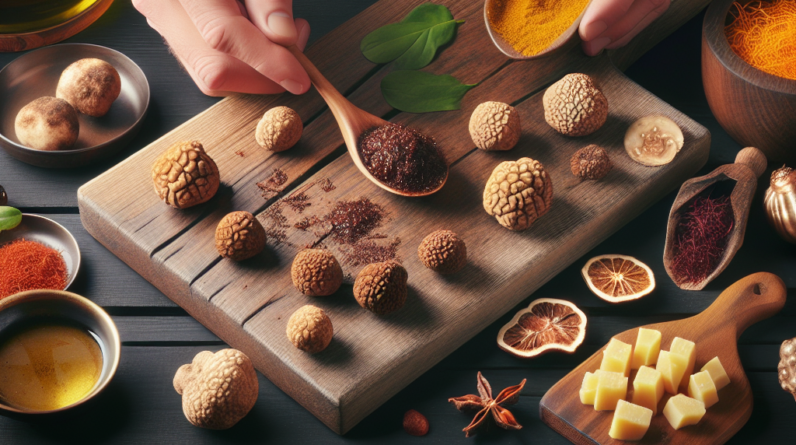Are you a seafood lover but unsure about how to choose and prepare seafood for dishes like linguine ai frutti di mare? Look no further! In this article, we will guide you through the process of selecting the freshest seafood and provide you with easy-to-follow tips on preparing it for delicious seafood dishes. Whether you’re a beginner or a seasoned chef, we’ve got you covered! So, let’s dive into the world of delectable seafood and enhance your culinary skills.

Choosing Seafood
Seafood is a delicious and versatile choice for any mealtime. Whether you’re a seafood aficionado or just starting to explore the vast ocean of flavors, choosing the right seafood is crucial to creating a memorable and flavorful dish. There are a few key factors to consider when selecting seafood: freshness, availability and seasonality, and sustainability and environmental impact.
Freshness of Seafood
When it comes to seafood, freshness is essential. Fresh seafood not only tastes better but also ensures your dish is safe to consume. There are a few indicators to look for when determining the freshness of seafood. Firstly, check for clear and bright eyes in fish. Cloudy or sunken eyes can be a sign of stale fish. Secondly, the skin should be moist and shiny, not dry or discolored. Lastly, a fresh smell is crucial. While seafood can have a slight briny scent, it should never smell overly fishy or off-putting.
Availability and Seasonality
Understanding the availability and seasonality of seafood is key to getting the best quality and flavor. Different species of fish, shellfish, crustaceans, and mollusks have specific seasons when they are at their peak. For example, lobster is typically abundant in the summer months, while oysters are commonly harvested during colder months. By choosing seafood that is in season, you can ensure that you are getting the freshest and most flavorful options available.
Sustainability and Environmental Impact
In recent years, sustainability has become a vital consideration when it comes to choosing seafood. Overfishing and irresponsible fishing practices can have a significant impact on marine ecosystems. It’s important to select seafood that is sourced responsibly, taking into account factors such as the fishing method used, the population of the species, and the impact on the environment. Look for certifications such as the Marine Stewardship Council (MSC) or the Aquaculture Stewardship Council (ASC) to ensure your seafood is sustainably sourced.
Types of Seafood
Seafood encompasses a vast array of delicious options, each with its own unique characteristics and flavors. From fish to shellfish, crustaceans to mollusks, there is something to satisfy every seafood lover’s palate.
Fish
Fish is one of the most popular types of seafood and comes in numerous varieties. From flaky white fish like cod and halibut to rich and oily options like salmon and tuna, fish offers a wide range of textures and flavors. When selecting fish, consider the dish you are preparing and choose a fish that complements the other ingredients. For example, delicate white fish works well in light and citrusy dishes, while heartier fish can stand up to bolder flavors.
Shellfish
Shellfish, such as shrimp, crab, and lobster, are prized for their sweet and succulent meat. These creatures have a hard outer shell that protects their delicate flesh. When it comes to selecting shellfish, look for shells that are intact and glossy, with no cracks or discoloration. Additionally, make sure the shellfish feels heavy for its size, indicating that it is full of meat.
Crustaceans
Crustaceans are a type of shellfish that includes crabs, lobsters, and crayfish. These creatures have a segmented body and a hard exoskeleton, making them a popular choice for seafood lovers. When choosing crustaceans, opt for ones that are lively and active, with strong and agile legs. Additionally, check for signs of molting, as soft-shell crustaceans can be a delicacy.
Mollusks
Mollusks encompass a variety of seafood options, including oysters, clams, mussels, and scallops. These creatures typically have a soft body protected by a hard shell. When selecting mollusks, look for shells that are tightly closed, indicating that the mollusk is alive. Discard any mollusks with cracked or damaged shells, as they may not be safe to consume. Freshness is key when it comes to mollusks, so be sure to give them a gentle tap. If the shell closes, it is a good sign that the mollusk is alive and fresh.
Preparing Seafood
Preparing seafood may seem intimidating to some, but with a few basic techniques, you can master the art of creating mouthwatering seafood dishes at home. Whether you’re cleaning and gutting fish, removing scales and skin, deveining shellfish, shelling crustaceans, or shucking mollusks, these steps will ensure your seafood is ready and prepped for cooking.
Cleaning and Gutting
Cleaning and gutting fish is an essential step in the preparation process. Start by rinsing the fish under cold water to remove any impurities. Next, use a sharp knife to make a shallow incision along the belly from the gills to the tail. Carefully remove the internal organs, being cautious not to rupture the gallbladder, which can release a bitter liquid. Rinse the fish again to remove any remaining debris.
Removing Scales and Skin
Some fish, such as salmon or mackerel, have scales that need to be removed before cooking. To remove scales, hold the fish firmly with one hand and use a fish scaler or the back of a knife to scrape the scales from tail to head. Once the scales are removed, rinse the fish to remove any loose scales. If the fish has skin, you can leave it on during cooking or remove it with a sharp knife, depending on your personal preference and the recipe requirements.
Deveining Shellfish
Shellfish, such as shrimp, often have a thin black vein running along their backs. This “vein” is actually the intestinal tract and can be gritty or unpleasant when consumed. To devein shrimp, start by making a shallow incision along the back of the shrimp with a sharp knife. Use a toothpick or the tip of the knife to lift and remove the vein. Rinse the shrimp under cold water to ensure it is clean and ready to use.
Shelling Crustaceans
Shelling crustaceans, such as crabs or lobsters, can be a messy but rewarding process. Start by removing the claws and legs from the body using a firm twist or a sharp knife. To remove the meat from the claws, crack them open using a crab or lobster cracker. Use a fork or your fingers to pick out the meat. To access the meat in the body, twist off the tail and gently remove the shell. Crack open the tail using your hands or a knife and remove the meat. For smaller crustaceans like crayfish, simply peel back the shell, twist off the tail, and remove the meat.
Shucking Mollusks
Shucking mollusks, such as oysters or clams, requires a bit of practice but can be a fun and rewarding experience. Start by gripping the shell in one hand, using a towel or a shucking tool for added grip. Insert a shucking knife or a small sharp knife into the hinge of the shell and twist firmly to pry it open. Slide the blade along the top shell to release the muscle holding the shell closed. Give the mollusk a gentle tap to check for signs of life and discard any that do not respond. Place the shucked mollusks on a tray, being careful to retain as much of the delicious liquor as possible.
Storing Seafood
Properly storing seafood is essential to maintain its freshness and quality. Whether you’ve purchased a surplus of seafood or have leftovers from a previous meal, following the right storage procedures will ensure your seafood stays safe to eat and maintains its delicious taste and texture.
Refrigeration
For short-term storage, refrigeration is key. Start by carefully wrapping your seafood in moisture-proof and odor-resistant wrapping, such as plastic wrap or resealable bags. Place the seafood on a plate or in a container, cover it tightly with wrap, and store it in the coldest part of your refrigerator. Most seafood will stay fresh in the fridge for up to two days, though it’s always best to consume it as soon as possible for optimal taste and quality.
Freezing
Freezing seafood is an excellent option for long-term storage. Start by cleaning and preparing the seafood as desired. Place the seafood in airtight containers or resealable freezer bags, removing as much air as possible to prevent freezer burn. It’s important to label the containers with the type of seafood and the date of freezing. Seafood can be stored in the freezer for up to three months, though it is recommended to use it within one to two months for the best flavor and texture.
Thawing
When it comes to thawing seafood, it’s important to do so safely to avoid any bacterial growth or loss of quality. The best method for thawing seafood is to transfer it from the freezer to the refrigerator and allow it to thaw slowly overnight. If you’re short on time, you can also thaw seafood under cold running water or use the defrost function on your microwave. It’s crucial never to thaw seafood at room temperature, as this can lead to spoilage and increase the risk of foodborne illnesses.

Cooking Techniques
Cooking seafood is a versatile and rewarding process that allows you to explore a range of flavors and textures. From delicate poaching to fiery grilling, there are numerous cooking techniques that can elevate your seafood dishes to new heights.
Poaching
Poaching is a gentle and delicate cooking technique that involves cooking seafood in a flavorful liquid, such as broth or wine. This method ensures the seafood remains moist and tender while infusing it with delicious flavors. To poach seafood, simmer the liquid of your choice and gently place the seafood in the liquid. Allow the seafood to cook until it is opaque and easily flakes with a fork. Poaching is particularly well-suited for delicate fish and shellfish.
Grilling
Grilling seafood adds a delightful smoky and charred flavor that complements its natural sweetness. Start by preheating your grill to medium-high heat and oiling the grates to prevent the seafood from sticking. Brush the seafood with a marinade or a light coating of oil and season with your preferred herbs and spices. Place the seafood directly on the grill and cook until it is opaque and slightly charred, flipping halfway through. Grilling works well for larger fish fillets, shell-on crustaceans, and firm-textured fish.
Steaming
Steaming is a healthy and versatile cooking technique that allows the seafood to cook in its own flavorful juices. To steam seafood, place a steamer basket or a colander over simmering water in a pot or a wok. Arrange the seafood in a single layer, ensuring it is not overcrowded. Cover the pot or wok with a tight-fitting lid and steam until the seafood is opaque and cooked through. Steaming is an excellent option for delicate fish, shellfish, and mollusks.
Sautéing
Sautéing is a quick and flavorful cooking technique that works well for smaller and more delicate pieces of seafood. Heat a small amount of oil or butter in a skillet or a sauté pan over medium-high heat. Add the seafood and cook for a few minutes on each side until it is opaque and cooked through. Sautéing is ideal for shellfish, small fillets, and shrimp.
Baking
Baking is a simple and hands-off cooking technique that allows the seafood to cook gently and evenly. Preheat your oven to the desired temperature and place the seafood in a greased baking dish. Season the seafood with herbs, spices, or a marinade, and bake until it is opaque and easily flakes with a fork. Baking is a great method for larger fish fillets, whole fish, and shellfish.
Frying
Frying seafood creates a crispy and golden exterior while keeping the inside moist and tender. To fry seafood, start by heating oil in a deep pot or a deep fryer until it reaches the desired temperature. Dredge the seafood in flour, batter, or breadcrumbs, ensuring it is evenly coated. Carefully place the seafood in the hot oil and fry until it is golden brown and cooked through. Frying works well for breaded fish fillets, shrimp, and calamari, among others.
Tips for Linguine Ai Frutti Di Mare
Linguine ai frutti di mare, or linguine with mixed seafood, is a classic Italian dish that showcases the flavors of the sea in a delicious and satisfying way. To create the perfect linguine ai frutti di mare, follow these tips:
Choosing the Right Seafood
Selecting the right seafood is crucial for a flavorful linguine ai frutti di mare. Opt for a combination of fresh and high-quality seafood, such as shrimp, clams, mussels, and calamari. Look for seafood that is in season and sustainably sourced for the best flavor and ethical choice.
Preparing the Linguine Pasta
Cook the linguine pasta until it is al dente, or firm to the bite. Follow the package instructions for cooking time and be sure to generously salt the boiling water. Drain the pasta, reserving a small amount of the cooking water to add to the sauce, if needed.
Preparing the Sauce
Start by sautéing garlic and chili flakes in olive oil until fragrant. Add cherry tomatoes and cook until they start to soften and release their juices. Pour in white wine and let it reduce slightly before adding seafood stock or clam juice. Simmer the sauce for a few minutes to allow the flavors to meld together. Season with salt, pepper, and freshly chopped parsley.
Combining the Seafood and Pasta
Add your prepared seafood to the sauce and gently stir to coat it in the flavors. Cover the pan and cook until the seafood is cooked through and the shells of the clams and mussels have opened. Remove any unopened shells before proceeding. Add the cooked linguine to the pan and toss it in the sauce, ensuring the pasta and seafood are well combined.
Garnishing and Serving
To add a burst of freshness and color, garnish your linguine ai frutti di mare with freshly chopped parsley or basil. For an extra touch of flavor, drizzle with a squeeze of fresh lemon juice. Serve the linguine ai frutti di mare immediately, piping hot, and accompanied by crusty bread to mop up the flavorful sauce.

Common Mistakes to Avoid
To ensure your seafood dishes are a success, it’s important to avoid common mistakes that can negatively impact their taste and quality. Here are some common mistakes to avoid:
Overcooking Seafood
Overcooking seafood can result in dry and rubbery textures, diminishing its natural flavors. Keep a close eye on the cooking time and remove the seafood as soon as it is opaque and easily flakes with a fork. Remember that seafood continues to cook even after it is removed from the heat, so slightly undercooking it is preferable to overcooking.
Using Low-quality Ingredients
Using low-quality seafood or ingredients can significantly impact the taste and overall enjoyment of your dish. Invest in fresh and high-quality seafood from reputable sources to ensure the best flavor and texture. Additionally, opt for fresh herbs, good-quality olive oil, and aromatic spices to enhance the overall depth of flavor.
Neglecting Proper Storage
Improper storage of seafood can lead to spoilage and potential foodborne illnesses. Follow the recommended guidelines for refrigeration and freezing to ensure your seafood stays fresh and safe to eat. Be mindful of expiration dates and take care to properly store leftovers to avoid any unpleasant surprises.
Not Testing for Freshness
Failing to test for freshness can result in lackluster flavors and potentially unsafe seafood. Before cooking, always check for freshness indicators such as clear and bright eyes, moist and shiny skin, and a fresh scent. Discard any seafood that shows signs of spoilage, such as cloudy eyes, dry skin, or a strong fishy odor.
Overloading the Dish with Seafood
While it may be tempting to load up your seafood dish with an abundance of flavors, it’s important to exercise restraint. Overloading the dish with seafood can result in an overcrowded and overwhelmed plate. Instead, aim for a balanced combination of seafood, allowing each ingredient to shine and complement one another.
Pairing Wine with Seafood Dishes
Pairing the right wine with seafood dishes can elevate the dining experience, enhancing the flavors of both the seafood and the wine. Here are some wine pairing suggestions to consider:
White Wine Varieties
White wines, such as Chardonnay, Sauvignon Blanc, and Pinot Grigio, are popular choices for pairing with seafood due to their crisp and refreshing nature. The vibrant acidity of these wines complements the delicate flavors of seafood without overpowering them.
Sparkling Wine and Champagne
Sparkling wines and Champagne are versatile options that pair well with a wide range of seafood dishes. The effervescence and lightness of these wines cleanse the palate, making them an excellent choice for rich and buttery seafood, such as lobster or scallops.
Rosé Wine
Rosé wine is a versatile option that can enhance the flavors of both delicate and robust seafood dishes. The crispness and fruitiness of rosé work well with dishes like grilled shrimp or seafood salads.
Light Red Wine Varieties
Light red wines, such as Pinot Noir or Gamay, can be unexpected but delightful pairings for certain seafood dishes. Opt for lighter-bodied red wines when pairing with seafood to avoid overpowering the delicate flavors. These wines complement dishes like grilled salmon or tuna tartare.
Seafood Allergies and Precautions
While seafood is a delicious and nutritious choice for many, it’s important to be mindful of seafood allergies and take proper precautions. Here are some considerations:
Identifying Allergies
Seafood allergies can range from mild to severe and can develop at any age. Common seafood allergies include shellfish, finned fish, and mollusks. Symptoms of seafood allergies can include hives, itching, difficulty breathing, and in severe cases, anaphylaxis. If you or someone you’re cooking for has a known seafood allergy, take special care to prevent cross-contamination and avoid consuming seafood altogether.
Substituting Ingredients
If you’re cooking for someone with a seafood allergy or prefer not to consume seafood, there are plenty of alternatives to consider. For fish, opt for flavorful options like chicken or tofu. For shellfish, substitute ingredients such as mushrooms or artichoke hearts. These substitutions can help create delicious and satisfying dishes that cater to everyone’s dietary needs and preferences.
Cross-contamination Prevention
When preparing seafood in a kitchen where allergens are a concern, it’s essential to take precautions to prevent cross-contamination. Use separate cutting boards, utensils, and surfaces for seafood and other ingredients. Clean all surfaces thoroughly before and after handling seafood to avoid accidental exposure.
Conclusion
Choosing and preparing seafood can be a delightful and rewarding experience when armed with the right knowledge and techniques. By considering factors such as freshness, availability, and sustainability, you can select seafood that not only tastes delicious but also supports responsible sourcing. Mastering techniques like cleaning, shelling, and cooking seafood opens up a world of culinary possibilities, allowing you to create mouthwatering dishes like linguine ai frutti di mare. Remember to be mindful of common mistakes, pair your seafood dishes with the right wine, and consider allergies and precautions to create a memorable seafood dining experience for all.










